Host:
Amit Prakash - Co-Founder & CTO of ThoughtSpot, former engineer at Google and Microsoft
Guest:
Rajat Monga - Corporate Vice President of AI Frameworks at Microsoft, Co-Founder of TensorFlow and Inference
Summary
In this special guest episode of the Effortless Podcast, Amit Prakash sits down with Rajat Monga, the creator of TensorFlow and current Corporate Vice President of Engineering at Microsoft. With a career spanning Google Brain, founding Inference, and leading AI inferencing at Microsoft, Rajat offers a unique perspective on the evolution of AI. The conversation dives into TensorFlow’s revolutionary impact, the challenges of building startups, the rise of PyTorch, the future of inferencing, and how transformative tools like GPT-4 and OpenAI’s Gemini are reshaping the AI landscape.
Key Takeaways
Scalable AI Systems: The evolution of TensorFlow highlights the importance of scaling, flexibility, and usability in creating impactful tools for research and production.
Competing Frameworks: PyTorch's focus on ease of use and the research community led to its rise, emphasizing the need for strategic user focus.
Infrastructure Challenges: Modern inferencing demands balancing rapidly evolving models, diverse hardware, and user expectations for cost-efficiency and latency.
Time-Series Prediction: Advances in Transformers and foundation models have enhanced predictive capabilities for complex time-series data.
Startups and Failure: Lessons from founding Inference underscore the importance of understanding product-market fit and prioritizing user pain points.
Emerging Trends: Innovations like OpenAI’s GPT-4 and AlphaZero-inspired approaches to reasoning herald significant shifts in AI capabilities.
Personal Reflection: Rajat stresses the importance of maintaining balance, meaningful relationships, and continuous learning for personal and professional growth.
In-Depth Insights
1. The Impact of TensorFlow on AI’s Evolution
TensorFlow emerged as a game-changer in AI by offering a scalable, flexible, and production-ready framework that catalyzed the development of deep learning across industries.
Scaling Machine Learning: Before TensorFlow, many ML frameworks were limited to single-node setups or niche hardware. TensorFlow introduced the ability to scale across thousands of machines and devices, enabling large-scale model training on massive datasets. For instance, it powered breakthroughs in image recognition, speech-to-text, and recommendation systems. This scalability redefined the possibilities of what machine learning could achieve.
Research Meets Deployment: TensorFlow bridged the gap between experimental research and real-world deployment. Researchers could prototype novel architectures while engineers could deploy them on production systems, from cloud servers to edge devices. This dual capability was essential for accelerating innovation and adoption.
Open-Source Revolution: By making TensorFlow open-source, Google sparked a democratization of AI tools. Students, startups, and enterprises could now access powerful tools previously restricted to tech giants, resulting in a global wave of AI-driven products. TensorFlow’s success also inspired an ecosystem of contributors, creating plugins, APIs, and integrations that extended its reach.
2. PyTorch’s Rise as a Research Favorite
While TensorFlow dominated for years, PyTorch emerged as a challenger, quickly becoming the framework of choice for academic researchers and experimentalists.
Ease of Use: Unlike TensorFlow’s static computational graphs, PyTorch introduced dynamic computation graphs, allowing researchers to define and modify models on the fly. This "define-by-run" philosophy made debugging intuitive, enabling rapid experimentation and iteration—especially critical in cutting-edge research.
Targeted Persona: PyTorch didn’t attempt to serve every use case. Instead, it focused on researchers’ needs, refining features for a narrow but influential user base. This targeted approach created a strong network effect, as academic labs started using PyTorch and graduating students carried it into the industry.
GPU Optimization: NVIDIA’s heavy optimization of PyTorch for its GPUs gave the framework a competitive edge in performance, particularly for training large neural networks. Coupled with a vibrant ecosystem of pre-trained models and tutorials, PyTorch made machine learning more accessible without sacrificing power.
3. Inferencing Costs Plummet
The plummeting cost of AI inference has opened doors for more applications, making cutting-edge models affordable for startups and enterprises alike.
Hardware Evolution: GPU and TPU advancements have dramatically increased computational efficiency. Companies like NVIDIA, AMD, and Google have been racing to release hardware that delivers higher performance at lower costs. AMD’s recent entrance into the market, for example, has brought competitive pricing and new architectural innovations.
Algorithmic Breakthroughs: Techniques like fast attention mechanisms and low-rank approximations have improved the efficiency of fundamental operations in transformers. For instance, "fast attention" reduces the computational bottleneck of processing long input sequences, making inference faster without sacrificing accuracy.
Model Compression: Approaches like knowledge distillation (where large models teach smaller ones) and quantization (reducing numerical precision for faster computation) have made it possible to shrink models dramatically. As a result, models with similar performance can now run at a fraction of the cost.
4. The Dawn of Reasoning Agents
Recent advancements in reasoning-based models, such as OpenAI’s Gemini (O1), are redefining how AI tackles complex problems.
Validation-Driven Outputs: Unlike traditional models that predict the next token in isolation, reasoning agents validate their intermediate steps, reducing the likelihood of errors. For example, if solving a math problem, the model can backtrack and re-check its calculations at each step.
Parallel Exploration: These agents explore multiple reasoning paths simultaneously, akin to brainstorming or deliberation. By evaluating several approaches to a problem, they mimic human decision-making processes, making them better suited for tasks requiring complex logic or creativity.
Transformative Potential: With reasoning agents, applications like AI assistants, customer service bots, and decision-support systems can move beyond static responses. They can engage in deep problem-solving, such as planning multi-step projects, analyzing legal documents, or generating creative strategies.
5. Insights from Entrepreneurship
Rajat’s journey as a founder at Inference revealed valuable lessons about building products and navigating the challenges of early-stage startups.
Solving High-Priority Problems: Identifying the right customer pain points is critical. While anomaly detection was technically impressive, many companies didn’t view it as their top problem. Startups must prioritize solving pain points that customers rank as urgent and critical.
Iterative Learning: Rajat emphasized the importance of rapid iteration and adaptation. Early feedback from customers should be treated as a treasure trove of insights, helping refine both the product and its positioning in the market.
Balancing Innovation with Practicality: Rajat’s experience highlighted the importance of aligning technical innovation with practical business needs. A product may be brilliant technically, but if it’s not aligned with how customers think, work, and buy, it’s unlikely to succeed.
Host Biography
Amit Prakash
Co-founder and CTO at ThoughtSpot, previously at Google and Microsoft. Amit has an extensive background in analytics and machine learning, holding a Ph.D. from UT Austin and a B.Tech from IIT Kanpur.
Guest Biography
Rajat Monga
Rajat Monga is a pioneer in the AI industry, best known as the co-creator of TensorFlow. He has held senior roles at Google Brain and Microsoft, shaping the foundational tools that power today’s AI systems. Rajat also co-founded Inference, a startup focused on anomaly detection in data analytics. At Microsoft, he leads AI software engineering, advancing inferencing infrastructure for the next generation of AI applications. He holds a Btech Degree from IIT, Delhi.
Episode Breakdown
{00:00:00} Intro and Setup: Amit introduces Rajat Monga as the podcast’s first guest and highlights his pioneering role in AI.
{00:01:15} Rajat’s Journey: From TensorFlow’s creation at Google Brain to leading AI inferencing at Microsoft, Rajat shares his career arc.
{00:06:00} TensorFlow’s Impact on AI: How TensorFlow revolutionized scalability and flexibility in machine learning research and deployment.
{00:16:00} PyTorch’s Competitive Edge: A discussion on PyTorch’s success with researchers and its eventual foray into production environments.
{00:27:00} Lessons from Inference: Rajat reflects on the challenges of running a startup, finding product-market fit, and the dynamics of customer needs.
{00:44:00} Future of Analytics Tools: Exploring anomaly detection, dashboards, and the need for smarter, more actionable analytics tools.
{00:53:00} Inferencing Breakthroughs: Advancements in AI inferencing, including hardware, software, and algorithmic optimizations.
{01:08:00} Reasoning and OpenAI Gemini: The potential of reasoning agents like OpenAI’s Gemini (O1) and their impact on AI’s future applications.
{01:16:00} Predictions for AI’s Future: Rajat shares insights on the next two to five years in AI, including reasoning systems and robotics.
{01:23:00} Personal Reflections: Rajat discusses resilience, gratitude, and the role of fitness and friendships in maintaining balance.
{01:28:00} Closing Remarks: Amit reflects on the conversation and the broader implications of curiosity, wisdom, and AI’s evolution.
References and Resources
TensorFlow
TensorFlow, co-founded by Rajat Monga, is one of the most influential frameworks in AI, offering tools to scale machine learning models for both research and production. Its graph-based computation system enables efficient model deployment across platforms, from mobile devices to massive cloud infrastructures.
Explore TensorFlow’s capabilities on its official websitePyTorch
PyTorch is a dynamic and flexible deep learning framework that gained immense popularity among researchers for its user-friendly interface and support for dynamic computation graphs. Its modular design allows quick experimentation, making it a leading choice for academic and applied AI projects.
Learn more about PyTorchGoogle Brain
Google Brain, an advanced research team within Google, has been at the forefront of AI innovation, driving groundbreaking work in neural networks, natural language processing, and large-scale AI systems. The division was instrumental in the development of TensorFlow and other transformative tools.
Discover Google Brain’s work and projectsOpenAI’s Reasoning Models
OpenAI’s reasoning models, including GPT-4, demonstrate cutting-edge advancements in iterative and tree-of-thought exploration. These capabilities push AI toward solving complex problems, from code generation to logical reasoning tasks, offering a glimpse into the future of autonomous AI agents.
Explore OpenAI’s reasoning breakthroughsMaslow’s Hierarchy of Needs
This classic psychological framework, conceptualized by Abraham Maslow, provides a lens for understanding user needs and prioritization in product design. Its application to AI highlights the importance of addressing fundamental requirements before advancing toward more sophisticated goals.
Learn about Maslow’s Hierarchy on Simply PsychologyBooks by Yuval Noah Harari: Sapiens
Yuval Noah Harari’s Sapiens: A Brief History of Humankind examines the evolution of human society and its technological advancements. The book offers a vital perspective on how emerging technologies, like AI, are reshaping societal structures and human behavior.
Find Sapiens on Amazon
Conclusion
Rajat Monga’s journey from TensorFlow to Microsoft exemplifies a career defined by impact and innovation. His insights into AI’s evolution and its future potential provide a compelling roadmap for anyone navigating this fast-changing field. Whether it’s through technical breakthroughs or personal growth, Rajat’s reflections remind us of the transformative power of curiosity, resilience, and community.
Stay tuned for more deep dives into the effortless world of innovation.

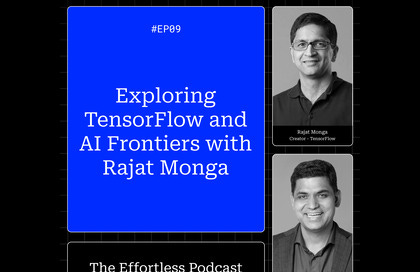

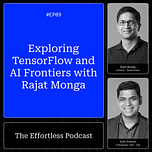
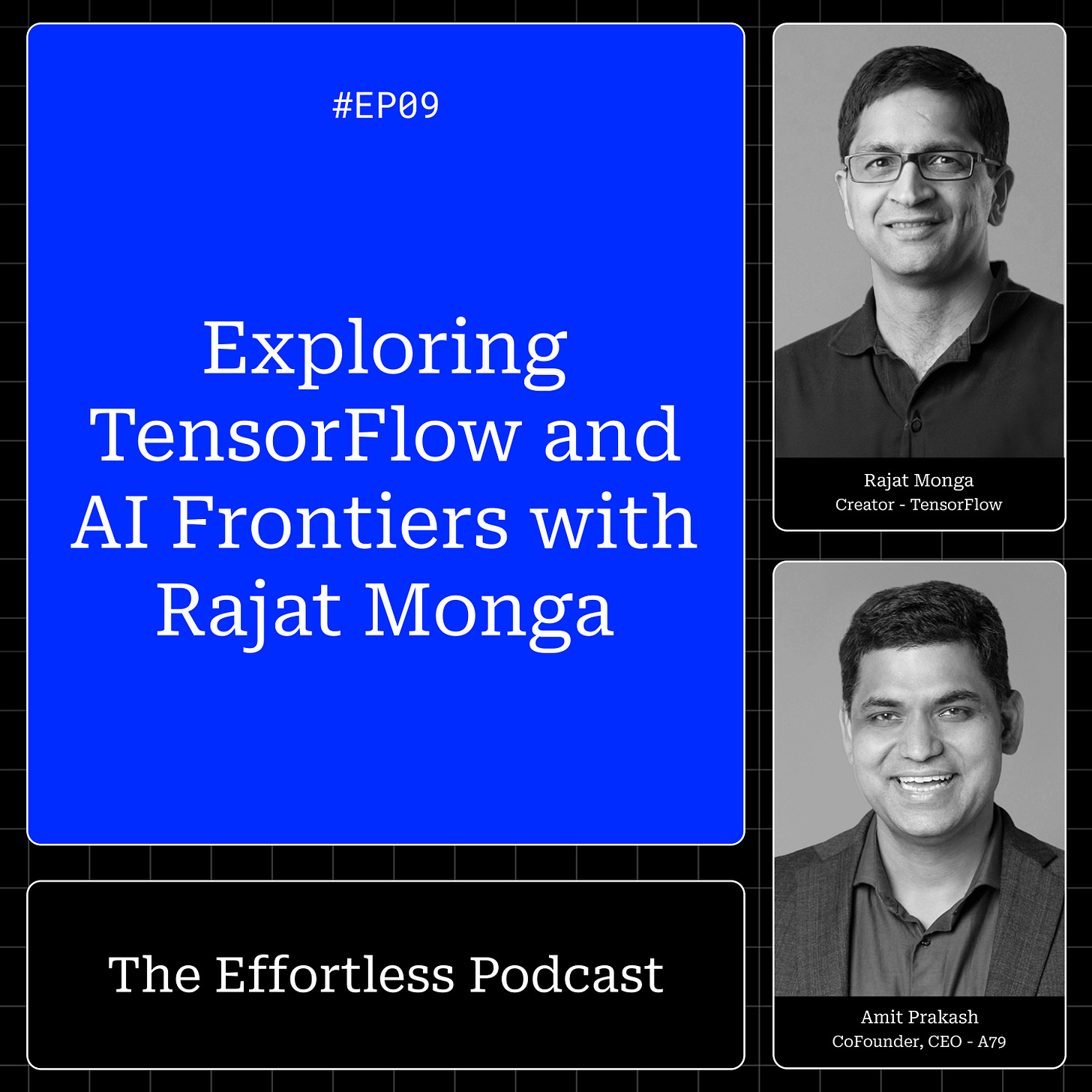


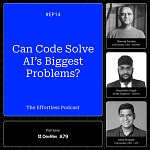



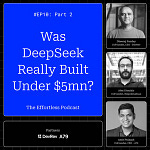
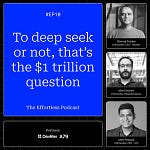
Share this post